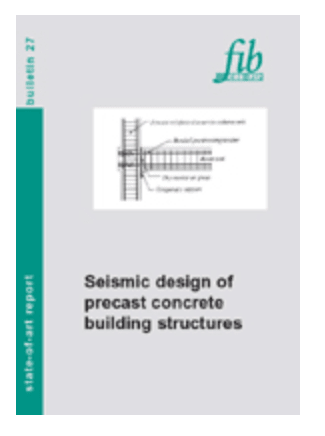centondollar said:
What do you mean by 1)? PT can only balance dead load and a minor amount of live load (anything else causes too much precamber and tension of top of section due to prestress), so I don´t see how it could be calibrated for large earthquakes. Once you choose a layout, you´re stuck with it.
You've got two things causing potential uplift on the system:
1) The vertical seismic loads which tend to be relatively small, even when the horizontal seismic loads are large. [V = 0.2 H_short_period] or something like that.
2) The balancing effect of the prestressing if it is draped to produce that effect.
Yes, if those two effects combine to snap the concrete in tension where it would normally be in compression under gravity loads, that is a potential problem. However, I submit that designer can solve that problem by:
A) Adjusting the balancing force -- drape and prestress -- such that no net uplift occurs, even under the expected seismic demand and/or.
B) Providing bonded reinforcing in the areas where the flexural stress reversal is anticipated.
Prosecuting strategy [A] will likely reduce the efficacy of the prestressing relative to situations where that constraint is not present. And, for that matter, so will a high ratio of live to dead load as hawkaz intimated earlier with respect to designing for the "empty". Will these reductions in efficacy alter the project economics such that prestressing is no longer a viable strategy? I don't know. For me, finding out would be the exercise of "design" in this situation.
centondollar said:
You cannot really control the amount of cracking in a seismic event..
I believe that you can:
1) If you wanted to badly enough, you could introduce enough P/A into the concrete such that it would not crack at all under the anticipated seismic demand.
2) You can provide bonded reinforcing designed to limit crack widths.
Naturally, since there is a lot of uncertainty involved in estimating seismic demands, there is also a lot of uncertainty involved in estimating seismic crack widths. Welcome to seismic design. The salient thing to recognize here, I feel, is that it is within the designer's power to design a prestressed concrete structure that satisfies whatever crack control limits would normally be imposed upon a non-prestressed structure. As such, the potential for cracking ought not be viewed as something that automatically renders a prestressed concrete structure unviable.
centondollar said:
Furthermore, if the structure has critical deflection limits (most structures do), the deflection post-earthquake will be excessive, since one of the main selling points of prestress is to provide predictable elastic stiffness. One may as well use a steel girder or truss if that elastic stiffness is lost during more or less minor earthquakes.
I disagree and feel that, with the bolded statement above, you are again imposing a binary, go/no-go judgment upon the viability of a system that is within the designer's power to control. The post-earthquake deflection of the beams will only be "excessive" if the designer
allows it to be excessive. If desired, a designer could readily:
a) Design prestressed beams that do not crack during minor seismic events and, thus, retain their full, elastic-ish stiffness. Stuff like this is the meat of the Performance Based Design approach.
b) Design prestressed beams that possess sufficient stiffness even after they crack flexurally during a seismic event.


